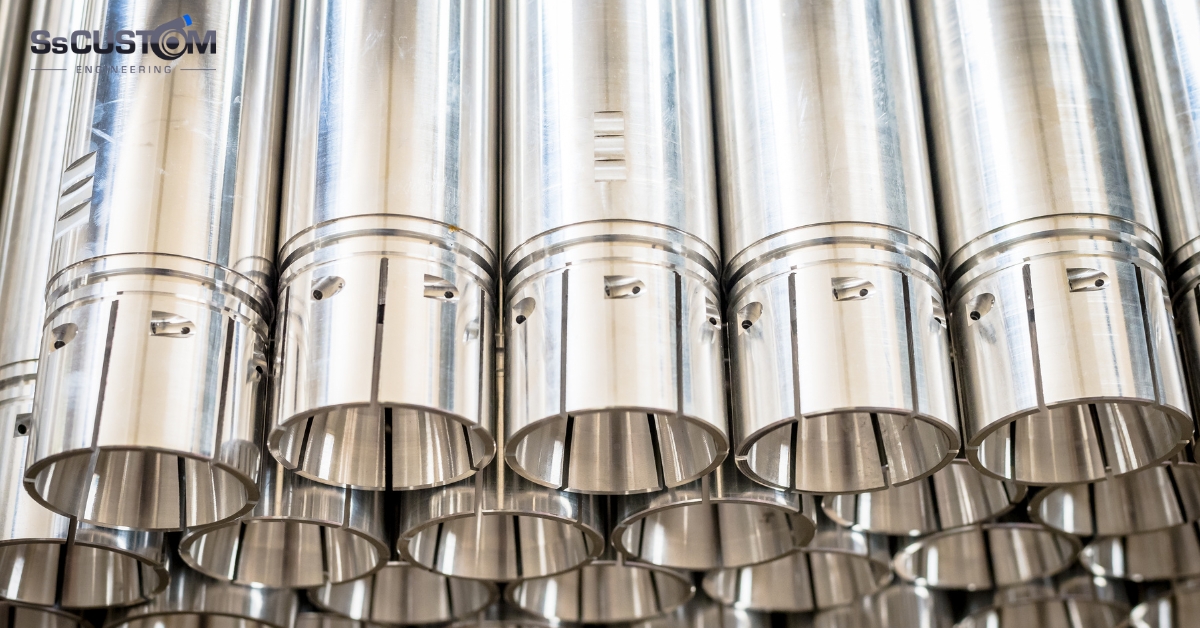Aluminum Bends: Precision Performance for Custom Automotive Builds
When it comes to building high-performance exhausts, intercooler systems, or custom intake setups, material selection is key. Among the most versatile and popular choices in the automotive fabrication industry is aluminum — prized for its lightweight properties and impressive resistance to corrosion. Within this space, Aluminum Bends have emerged as indispensable components for both professionals and DIY enthusiasts seeking optimal airflow dynamics without adding weight.
In this guide, we will explore what makes aluminum bends essential for performance setups, the different types available, and how to choose the right bend for your application. Whether you’re upgrading a turbocharged engine or building a custom exhaust from scratch, understanding the value of aluminum bends can be the key to unlocking power and efficiency.
Why Use Aluminum Bends?
Aluminum bends offer an unbeatable balance between performance, aesthetics, and affordability. Here’s why they’re a go-to material:
1. Lightweight Yet Durable
Aluminum has approximately one-third the density of steel, making it significantly lighter. This matters in performance applications where every gram counts. Despite its weight, aluminum still retains enough structural integrity to handle high airflow and moderate thermal stress.
2. Excellent Corrosion Resistance
Thanks to its natural oxide layer, aluminum resists rust and corrosion even in humid or salt-laden environments. This makes aluminum bends ideal for use in vehicles exposed to outdoor conditions, coastal areas, or off-road driving.
3. Ease of Fabrication
Aluminum tubing is easier to cut, weld, and polish compared to stainless steel. For fabricators, this reduces labor time and cost. It’s also readily available in various sizes, diameters, and bend angles.
Types of Aluminum Bends
There are several types of aluminum bends used in automotive and industrial setups. Each type serves a specific purpose depending on airflow dynamics, system design, and space constraints.
| Bend Type | Common Usage | Bend Angle |
|---|---|---|
| Mandrel Bends | High-performance exhausts, intercoolers | 45°, 90°, 180° |
| Pie-Cut Bends | Custom, tight-radius turns | Variable |
| Oval Bends | Low-clearance areas like underbody | 45°, 90° |
| U-Bends | Turbo kits, compact routing | 180° |
Applications of Aluminum Bends
Aluminum bends are used extensively across multiple vehicle systems. Below are the most common applications where these components shine:
● Intercooler Piping
High-boost turbo and supercharged engines rely on efficient airflow to deliver performance. Aluminum bends help route air through intercoolers with minimal resistance, maintaining boost pressure and reducing heat soak.
● Cold Air Intakes
Performance cold air intake systems benefit from lightweight aluminum tubing that resists heat soak and provides smooth airflow. Precision bends help route intakes into optimal positions within the engine bay.
● Custom Exhaust Systems
While stainless steel is more common in high-heat exhaust sections, aluminum bends can be used in mid-pipes or resonator sections where temperatures are more manageable. Their lighter weight helps reduce overall mass and vibration.
● Radiator and Coolant Routing
Aluminum is non-reactive with most coolants, making it suitable for custom radiator hose solutions or bypass piping in tight engine bays.
Choosing the Right Aluminum Bend
Choosing the proper aluminum bend isn’t just about angle and radius—it also involves diameter, wall thickness, and finish. Here are key factors to consider:
✔ Tube Diameter
Match the inner diameter of the bend to your system’s flow requirements. A turbocharged setup, for example, may require a 2.5” to 3” diameter to maintain pressure and minimize restriction.
✔ Bend Radius
A tighter radius bend is great for confined spaces but can introduce turbulence. Mandrel-bent aluminum tubing ensures smooth transitions with minimal airflow disturbance.
✔ Wall Thickness
Thicker tubing (e.g., 16-gauge) provides more strength and resistance to collapse during high-pressure operation or welding. However, thinner walls may suffice for low-pressure systems like air intakes.
✔ Finish
Aluminum bends are available in raw, polished, or powder-coated finishes. Choose a finish based on both appearance and environmental exposure.
Performance Benefits of Using Aluminum Bends
Using Aluminum Bends in custom setups brings measurable gains in efficiency and performance. Some key advantages include:
- Lower intake temps: Aluminum dissipates heat better than steel, reducing heat soak in air intake systems.
- Faster spool times: Lightweight piping reduces lag in turbocharged setups.
- Improved throttle response: Efficient air routing means air reaches the combustion chamber faster.
- Reduced weight: Each pound saved contributes to better power-to-weight ratio.
Proper Installation Tips
Installing aluminum bends may sound straightforward, but there are critical points to ensure performance and durability:
1. Welding Compatibility
Ensure the aluminum tubing matches in alloy (typically 6061) for strong, clean welds. TIG welding is recommended for best results.
2. Use Quality Clamps and Couplers
Silicone couplers with T-bolt clamps ensure airtight seals and allow for easy disassembly. Avoid regular worm clamps as they may not provide sufficient pressure.
3. Mock-Up Before Final Welding
Test fit all bends and piping before welding to avoid clearance issues and reduce material waste.
4. Bead Rolling
For boosted setups, it’s crucial to bead roll the ends of aluminum bends to prevent silicone couplers from blowing off under pressure.
Trusted Source for Aluminum Bends
When sourcing materials for your next fabrication project, quality and consistency matter. That’s why experienced builders turn to reliable suppliers like SSCustoms for top-tier aluminum components. Their collection of premium aluminum materials includes precisely manufactured bends, straight tubing, and complementary fittings to make your build seamless from start to finish.
With a wide selection of bend angles, radii, and tube diameters, SSCustoms ‘ Aluminum Bends are ideal for both street and track applications.
DIY vs. Pre-Fabricated Bends
Fabricators often face the decision of whether to create bends from straight pipe sections or use pre-fabricated aluminum bends. While DIY bends allow maximum customization, pre-made mandrel bends offer:
- Perfect consistency and accuracy
- Clean finishes with minimal prep work
- Time and labor savings
- Reduced chances of material fatigue from improper bending
For most builders, pre-fabricated bends strike the perfect balance between customization and efficiency.
Maintenance and Longevity
Although aluminum requires less upkeep than steel, regular inspection is important:
- Check welds for fatigue or hairline cracks over time.
- Clean exterior surfaces to prevent buildup of dirt or oil, which can retain heat.
- Re-tighten clamps occasionally to prevent boost leaks.
With proper care, aluminum bends can last the lifetime of the vehicle, especially when not exposed to excessive engine bay heat.
Final Thoughts
For automotive performance enthusiasts, every component matters — and Aluminum Bends provide the right mix of strength, weight savings, and airflow optimization. Whether you’re building a custom turbo setup, routing an intercooler system, or designing a cold air intake, aluminum bends are an essential element that elevates both function and form.
By choosing high-quality aluminum bends and installing them with care, you’re investing in a system that delivers results on the street, strip, or track. And with trusted suppliers like SSCustoms offering precision-crafted components, your build is off to a high-performance start.




